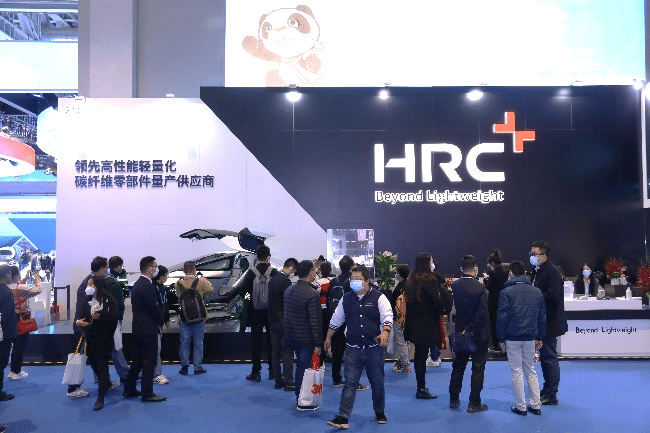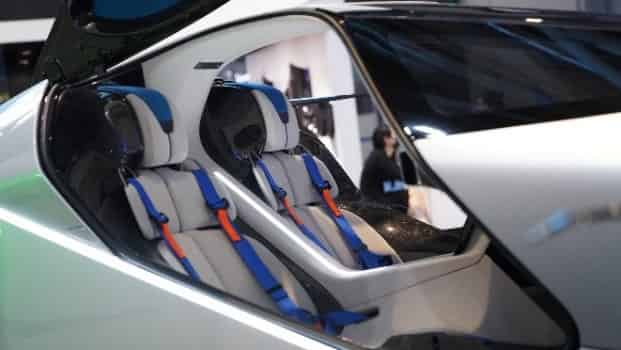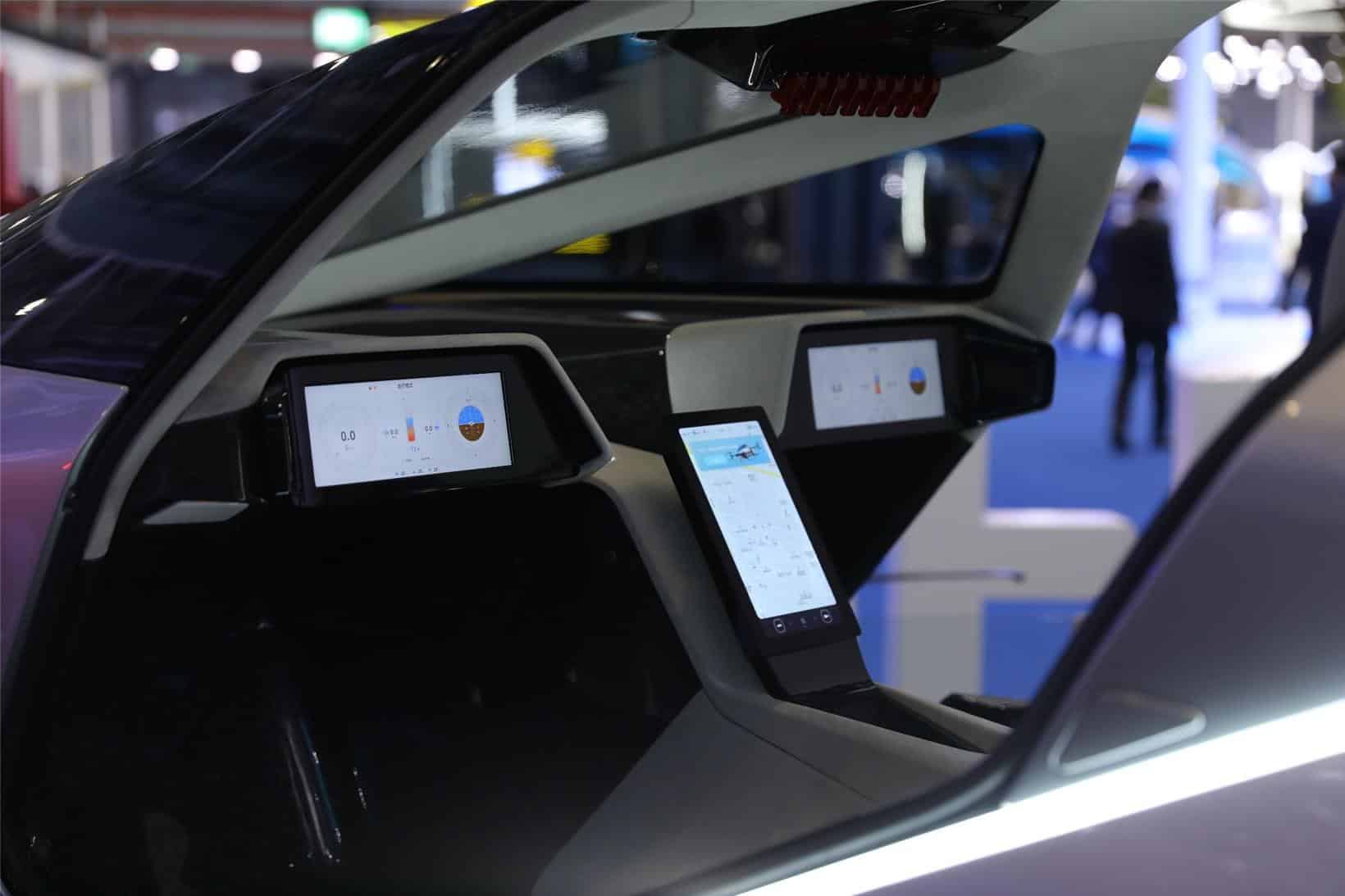“Flying car” reinforced by HRC lightweight solutions stuns the market
As eVTOL became a hot topic worldwide, mobility solution providers, well established or start-ups, have all shown great interest or already dedicated themselves in the study and development of the latest generation of eVTOL product.
With the model X2 flying car displayed at its booth at CIIE China International Import Expo) 2021, HRC has officially announced its close cooperation with XPeng HT Aero, one of the most bold and leading eVTOL manufacturers in China. The presence of the flying car aroused huge interest on-site with the audience curious about its extraordinary functions and features, especially with the lightweighting achieved by carbon fiber composite.

X2 with carbon fiber structure

X2 in the center of attention
As the exclusive carbon fiber parts manufacturer of X2, HRC has successfully developed and delivered more than 100 types of carbon fiber parts for this futuristic flying car. To get the right material designed in the right way, the technical team defined the materials and finally shaped the seat frame and control panels with specific types of carbon fiber SMC. In addition, the parts were gloss painted to achieve a classy final finish. The engineering team solved the tricky challenges of lamination on time before getting all the interior parts cured in the autoclave.
The HRC team was fully engaged in successfully completing the precise positioning, installation and assembly of the carbon fiber parts, including cockpit, seats, mechanical arm and other structural, interior and exterior parts, together with more than 200 metal and plastic parts, and more than 1,000 standard parts, not to mention the 3.8-meter large-size floor covering, and mastered the composite knowhow from sheet to innovation.
To meet specific technical targets, the engineering of structural parts was crucial as well as technology intensive. HRC conducted batch production with optimized tooling of complex structural parts like the AB pillar, which was quite a challenge. The large A-shaped part of the complete AB pillar is made as a hollow structure while the two ends are solid structures. The process is a combination of compression molding and autoclave initiated by HRC. Thanks to the consistent wall thickness and precise molding the part has passed the aviation-grade ultrasonic non-destructive testing. For the supporting arm, HRC engineers designed a special positioning mechanism which could meet the high precision positioning requirements of metal pre-embedded parts. The carbon fiber structure based X2 weighs only 560 kg with batteries and can carry two passengers with a maximum load of 200 kg.

X2 carbon fiber cockpit and seats

X2 control panels made in carbon fiber SMC material
As a full-electric “flying car”, the X2 will not emit carbon dioxide in the blue sky. Still, HRC is forging ahead, together with its industrial partners, in the development and implementation of other low-carbon, green strategies, focusing on sustainable and renewable composite solutions to accelerate the adaptation of state-of-the-art composite technologies in transportation. As Erich Fries, Global Business Development Director of HRC put it: “HRC is tapping into synergistic innovations which are believed to benefit more industrial participants with shared interest, generally, to carry out robust solutions for building clean energy systems.”

